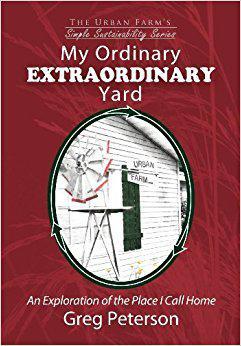Greg’s Favorite Tree By Greg Peterson
My favorite plant to nurture at the Urban Farm is the fruit tree, as it appeals to the lazy gardener in me: I can plant a tree once and reap the bounty for many years to come. The selection of fruit trees that grows in the Valley is vast — peaches, apples, apricots, plums, pears and citrus — discovering just what works here and how to pick the perfect fruit trees for your yard can be perplexing. In backyard orchard culture, the biggest issue (pun intended) is to keep your trees small, which offers two benefits. Small trees are easier to pick, plus you can plant in a greater variety of trees, effectively extending your harvesting season.
Some of my favorite fruits are the ones with the pit inside, not just because they are the most delectable, they are the also the first to ripen each year. Peaches and apricots thrive most readily, with a modest showing coming from the plums. Cherries, however, are a no go here in the desert, as they all require much more chill than we receive.
Of the stone fruit, peach trees produce the heartiest and, after only three or four years in the ground, should produce a nice sized crop. Planting several different varieties will give you an extended harvest that lasts from the middle of May till the end of June. Use the Desert Gold variety for peaches in May and the Midpride for June. Then, plant the Tropic Snow for a nice batch of peaches right in the middle.
Apricot trees, on the other hand are a little more finicky as they require 400 hours of chill time and don’t produce as much fruit as peach trees. So, if you are planning an apricot tree in your yard, look for a cooler place away from any block walls, streets and other structures that hold heat.
Plum trees do moderately well, although they usually only produce every other year and offer merely five or ten pounds of fruit per tree. So only plant plum trees if you really love them and then plan to be patient.
Anna and Dorsett Golden are the two hardiest apples that thrive in the summer heat. Blossoming early in the year, they produce a medium to large green apple with a red hue. Their crunchy tart taste gradually sweetens as the summer heat arrives. In most years, the apple harvest begins at the end of May and concludes when we run out of fruit in July. I have two small trees in the front yard that bear several hundred pounds of apples per season. When I am sick of eating apples, I call Susan at the Calico Cow and ask her for some mid-summer apple alternatives. She turns the fruit of my labor into a scrumptious apple butter that I enjoy canning, which lasts well into next season.
The other pome fruit is the pear and if you cruise around some of the older parts of Phoenix Arizona, you can see some monster pear trees like the one on the roadside at Third Street and Glendale Road. These giants are the exception to the rule, because pears typically have a very hard time in our climate. If you are insistent on planting one, select one of the Asian varieties such as the Tsu Li or Ya Li. Expect that they will take a long time –think four to six years — to become established and, when they do, they will only produce five or ten pounds per tree.
Citrus is fruit with a long tradition in the Valley having been planted extensively in the 1920’s as orchard crops. The secret of citrus is simply to plant what you love, and watch it produce more than you will ever need. The fact that some citrus varieties ripen as early as December provides another bonus. Like apples, citrus stays on the tree until you are ready to eat it and will last well into the spring and early summer months.
One of the many questions I am asked is “Do I need two trees for them to cross pollinate?” Of the trees discussed in this article, pears are the only ones that do. Plums will do better if they have another different variety to pollinate with, but all of the rest will do just fine on their own. So plant to your heart’s content.
Backyard orchard culture is a stress-free strategy that can net you a plethora of yummy edibles all year around, not to mention some fantastic shade in your yard. To learn more about planting fruit trees here in the Valley, visit www.urbanfarm.org and download the “Backyard Orchard Culture” brochure or attend one of the many classes that we offer here at the Urban Farm.






